Gas analysis in
horticulture applications
Gas sensors play an essential role in monitoring and tracking environmental conditions in greenhouses and horticultural facilities. Their importance lies in their ability to precisely control factors such as carbon dioxide (CO2) levels, ethanol, and other VOCs such as carbon monoxide (CO). These sensors ensure that optimal environmental parameters are maintained, which has a direct impact on plant growth and health, as well as on overall crop quality.
The importance of gas monitoring in horticulture
Gas monitoring is of key importance in horticulture, involving not only the ambient air but also the plants and crops themselves. This comprehensive approach provides invaluable insights into various aspects of plant growth and development. Carbon dioxide (CO2) levels, for instance, are pivotal for photosynthesis, enhancing plant growth and yield when meticulously managed.
Furthermore, gas sensing can be applied directly to plants and harvested crops, allowing for the measurement of specific gases. For example, the assessment of ethylene and other gas levels in fruits provides insights into their maturation status. This data empowers growers to pinpoint the optimal moment for harvest, minimizing the risk of premature or delayed harvesting and reducing post-harvest losses.
Gas sensors at plant level can detect concentrations of undesirable gases that are harmful to crop growth. By identifying and managing these gases, horticulturalists can extend the shelf life of horticultural produce and reduce waste.
Also, in winemaking, measuring carbon dioxide (CO2) levels is very important. With the oxygen, CO2 has a direct effect on the vine and the grape, so excessive exposure to CO2 or O2 during winemaking can lead to changes in the wine’s flavor, color and aroma. Gas sensors help maintain low oxygen conditions, thus preserving the quality and reputation of the wine.
Overall, gas monitoring in horticulture, whether in the ambient air or within plant tissues, offers a holistic approach to achieving superior plant health, enhancing crop quality, and optimizing agricultural efficiency. It equips growers with the data they need to make informed decisions, resulting in healthier plants, reduced waste, and increased agricultural productivity.
Discover our related articles
Our dedicated articles
Our expertise:
the non-dispersive infrared
spectroscopy
In the field of gas analysis, particularly in the context of horticulture, non-dispersive infrared (NDIR) sensors are ideal. These sensors enable gases to be monitored not only in plant tissue, but also in the ambient air of the growing environment.
An NDIR sensor consists of a detector designed to quantify the amount of infrared light at a specific wavelength that is absorbed by a specific gas, whether in plant tissue or in the greenhouse atmosphere.
How does it work?
An optical emitter produces infrared radiation which passes through a cuvette onto a detector. The molecules of the gas of interest absorb part of this radiation. This absorption reduces the intensity of the infrared light, which is then precisely measured by the detector.
To ensure accuracy, a band-pass optical filter is placed in front of the detector. This optical filter effectively eliminates all other wavelengths likely to be absorbed by unwanted gas molecules, ensuring that the measured absorption is uniquely attributed to the gas involved.

